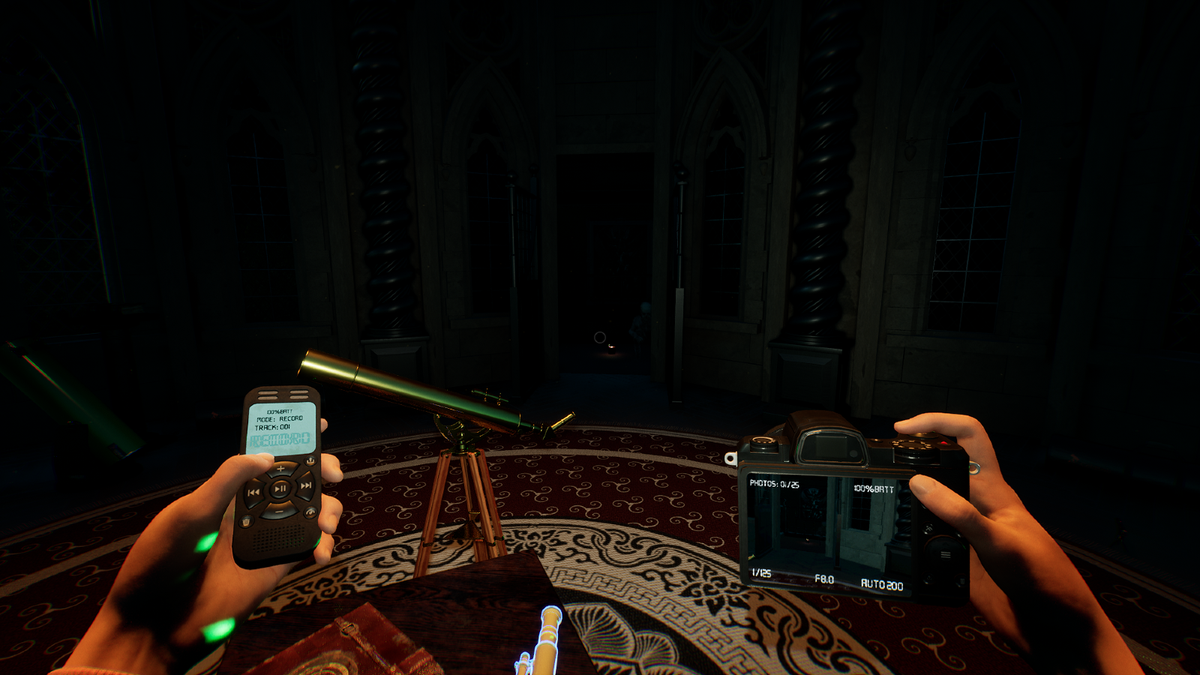
A while back, I reviewed a single-player ghost hunting game called Conrad Stevenson’s Paranormal P.I., and overall, I quite liked it. The game is a true love letter to real-life ghost hunting, with a stellar setting to boot. My main critique was that ghosts were too flaky, leading to tedious waiting periods between bouts of paranormal activity. Now, the sequel is out, titled Among The Whispers—Provocation; this installment makes great strides in streamlining the formula while remaining authentic to the paranormal investigator experience.
Let’s start with the story. This time around, players take the role of Stephanie, a young woman whose encounter with the paranormal led her to Conrad Stevenson, who then trained her in the art of ghost hunting. This was alluded to in the previous installment, with Conrad saying he was looking for an apprentice. I’m glad to see hints in previous games paying off, and this is by no means the only time that Paranormal PI is referenced in Provocation.
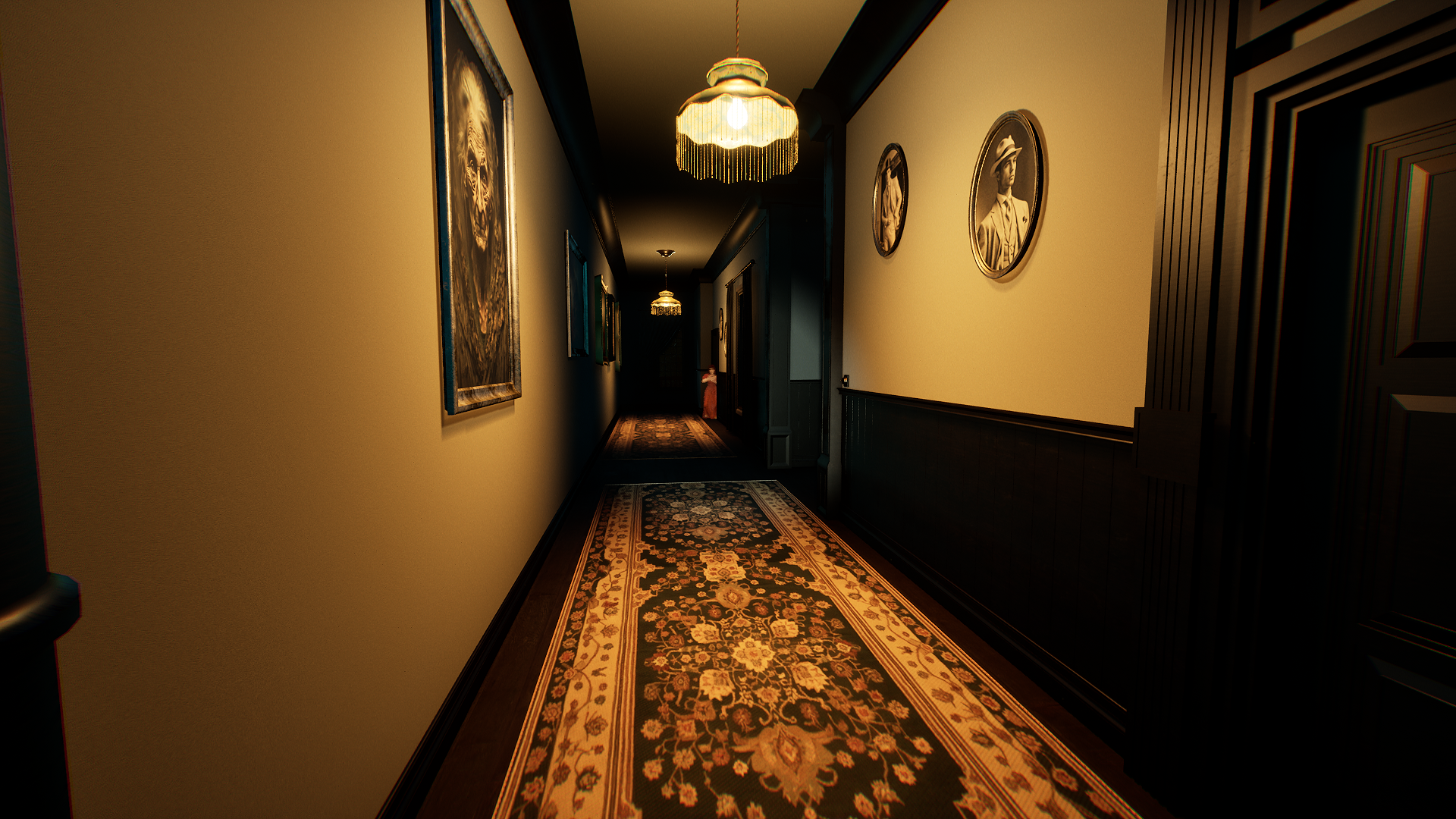
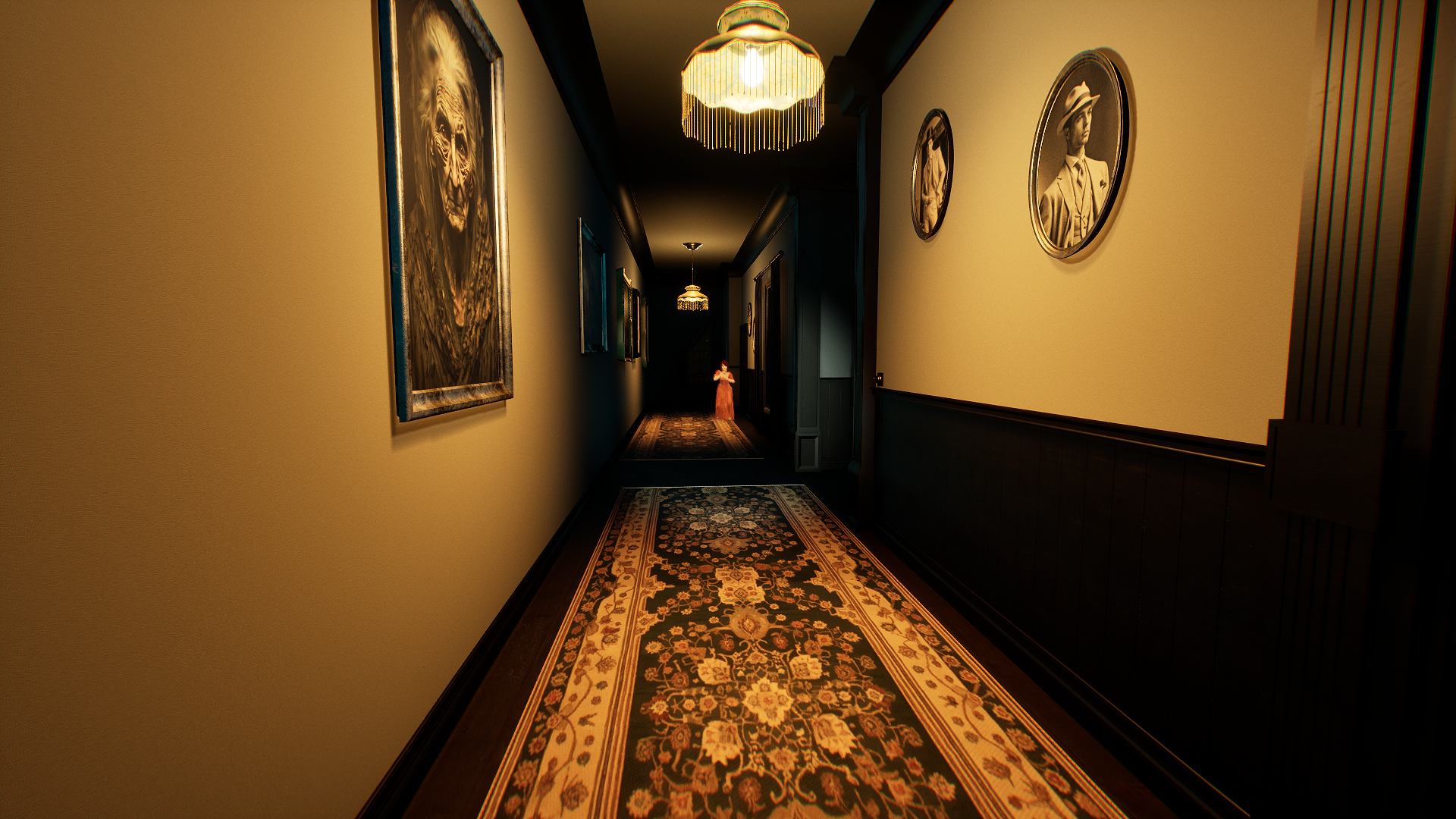
While players get a change in protagonist, the broader setting remains the same, and that’s a good thing. It’s great to see that New Eidolon will be a recurring setting, as it closely mirrors New England, which in my eyes is the perfect region for a ghost-hunting series. Between the plethora of old historical districts, sprawling forests, and storied shores, it seems like there are folk tales of the spooky and macabre everywhere you look.
Zooming in, the gameplay itself takes place on Magnificent Drive, more specifically, in a mansion. The estate has a numbered address, but I’ve forgotten it. The numbers simply don’t matter. Insofar as the name is concerned, the building itself IS Magnificent Drive—it renders all other homes in the area to mere hovels in terms of significance. At most, other homes gain the status of archival footnote because of their proximity to Magnificent Drive’s unfathomably wealthy inhabitants. Vast in size and monumental in historical value, the estate is a gold mine for paranormal activity, and it’s Stephanie’s job to get the property sorted out by helping the ghosts pass on.
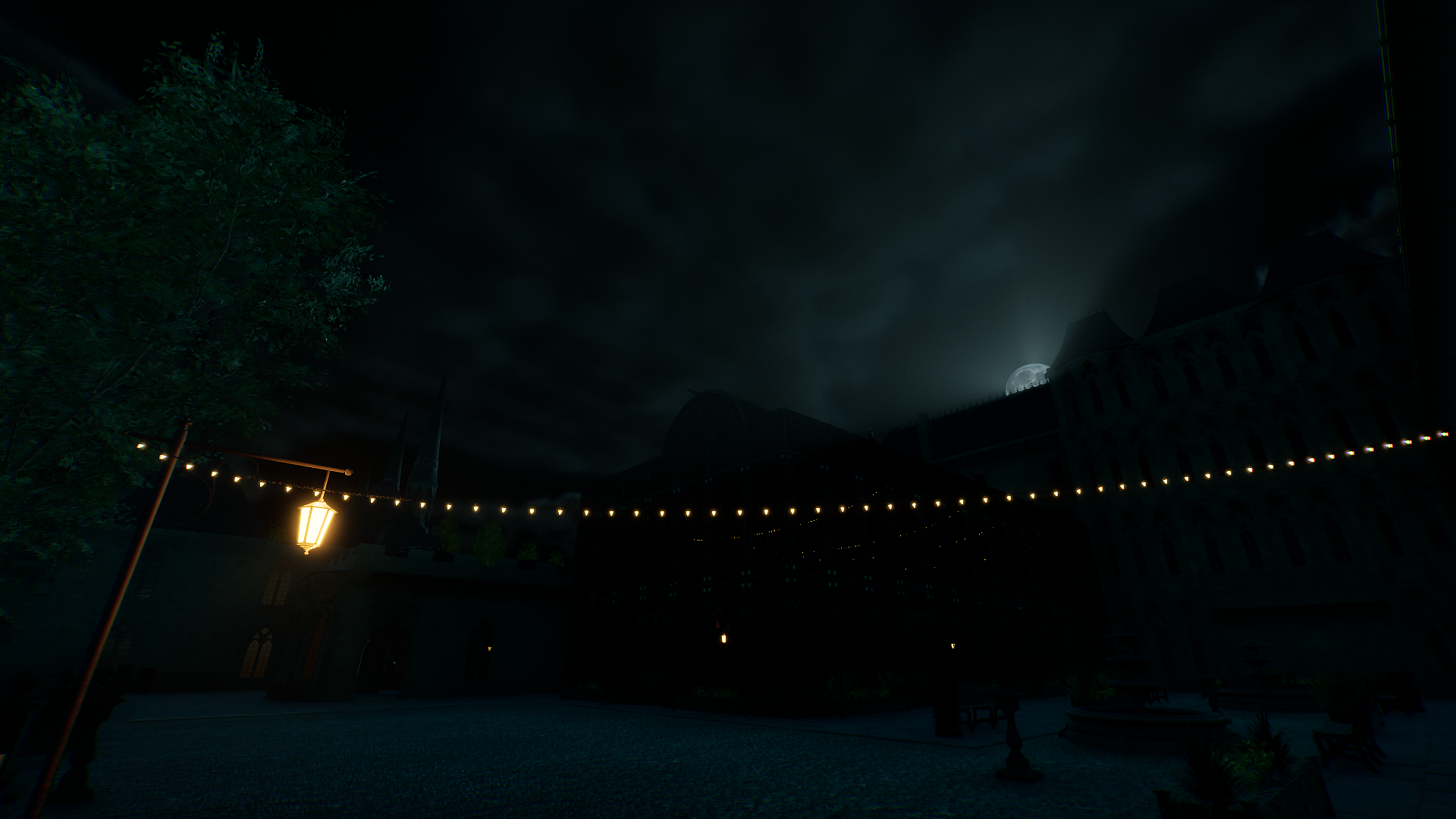
Let’s dive into the ghost hunts. Every investigation starts at basecamp, a plastic fold-up table with a laptop on it, which is located by the mansion’s front doors. Though, the laptop is perhaps the most important part. On the laptop, you’ll find an essential email detailing what room the ghosts are in, a family tree of the mansion’s inhabitants that goes back generations, and Stephanie’s Spirit Blog, detailing ghost behaviors and how provocations work, which we’ll get into in a second.
After gaining some preliminary information, you’re off to find the haunter(s). Of course, you have the main tools of the trade to help you out. There’s an EMF meter and a temp reader for getting a beat on the specter. Then there are placeable options, like a DOTS pen that projects a laser array which changes color when the ghost is in its path, and an EMF pod that chirps when an entity is nearby. Between these four tools, you should just about always know where the ghost is. In addition, you have a camera for snapping photos when the entity manifests, an audio recorder and parabolic microphone for when it makes noise, and a camcorder that automatically captures video of paranormal activity. Gaining paranormal evidence by taking photos, recordings, and EMF and temp readings increases the ghost’s level. The higher the ghost level, the more active it is, which gives you more opportunities to collect evidence, creating a positive feedback loop. The end goal is to get the ghost to max level, then release it.
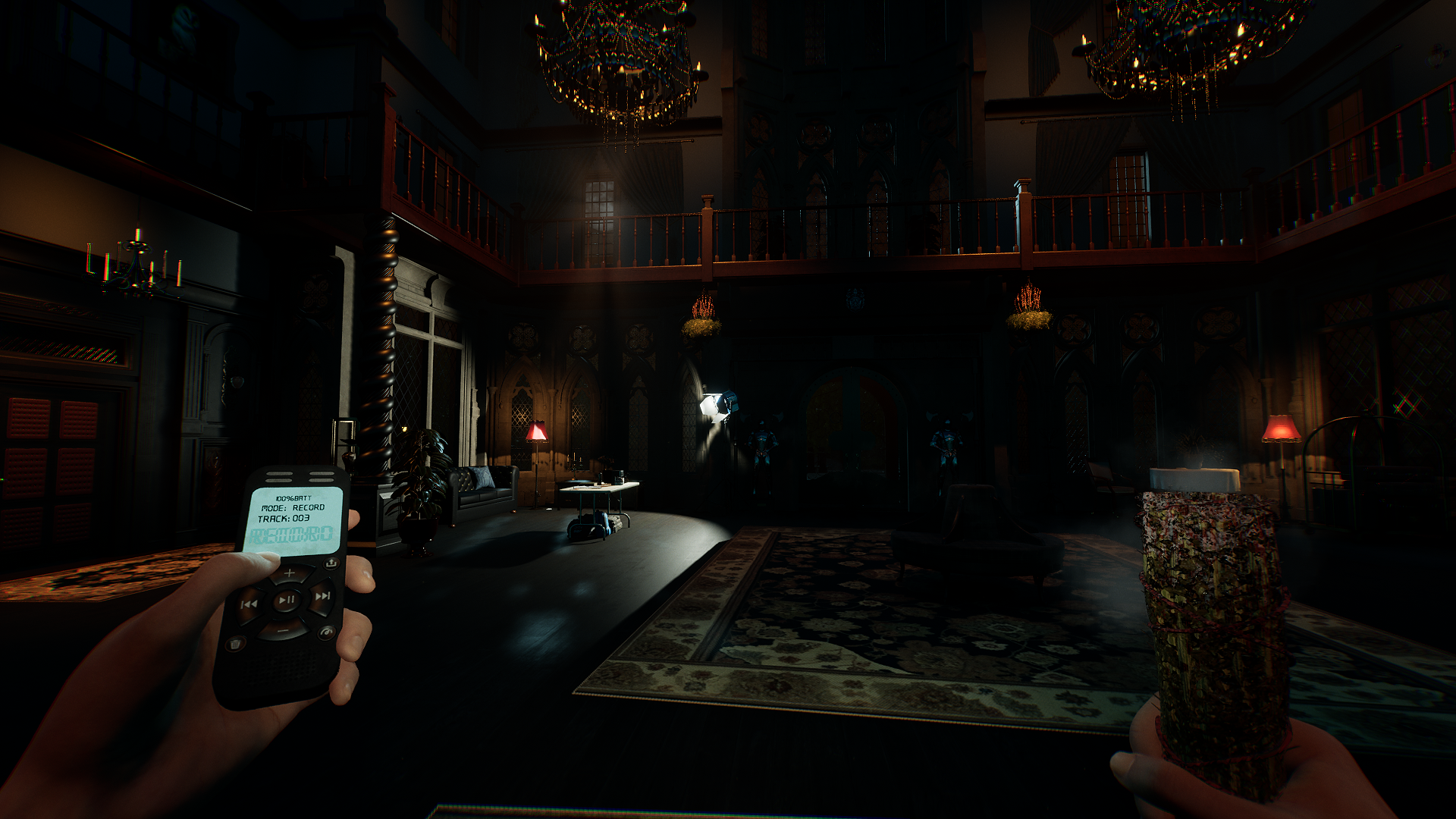
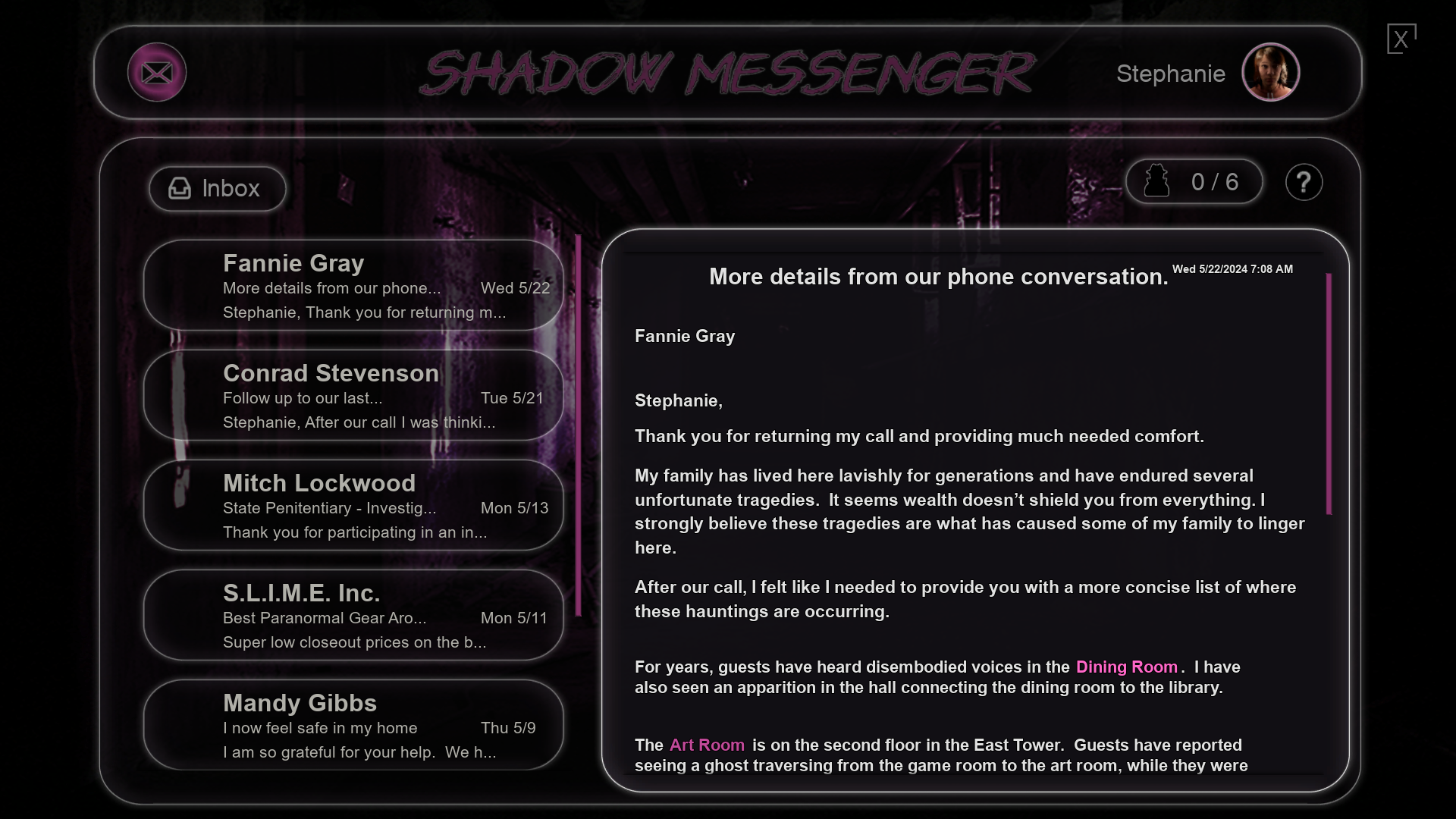
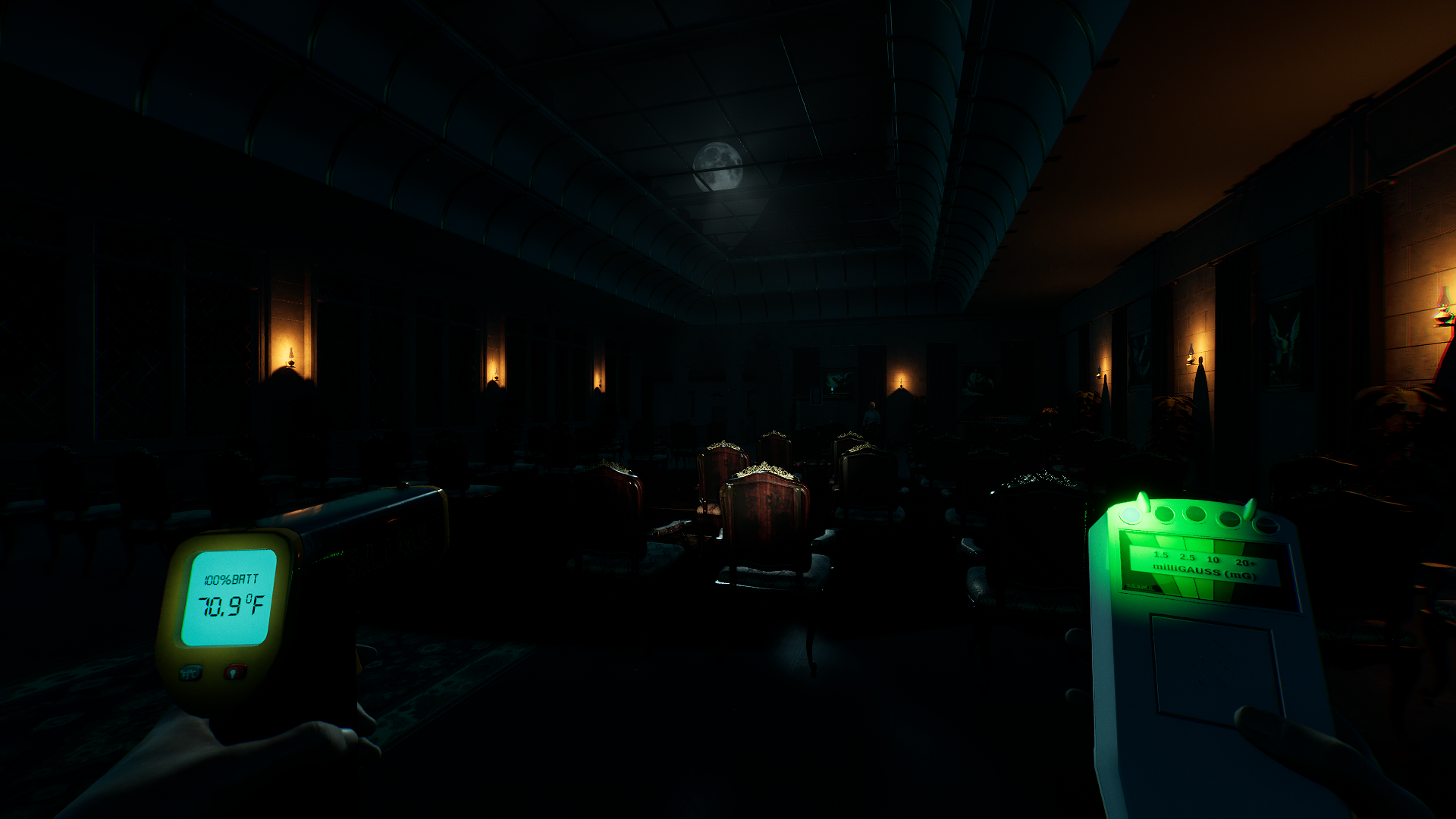
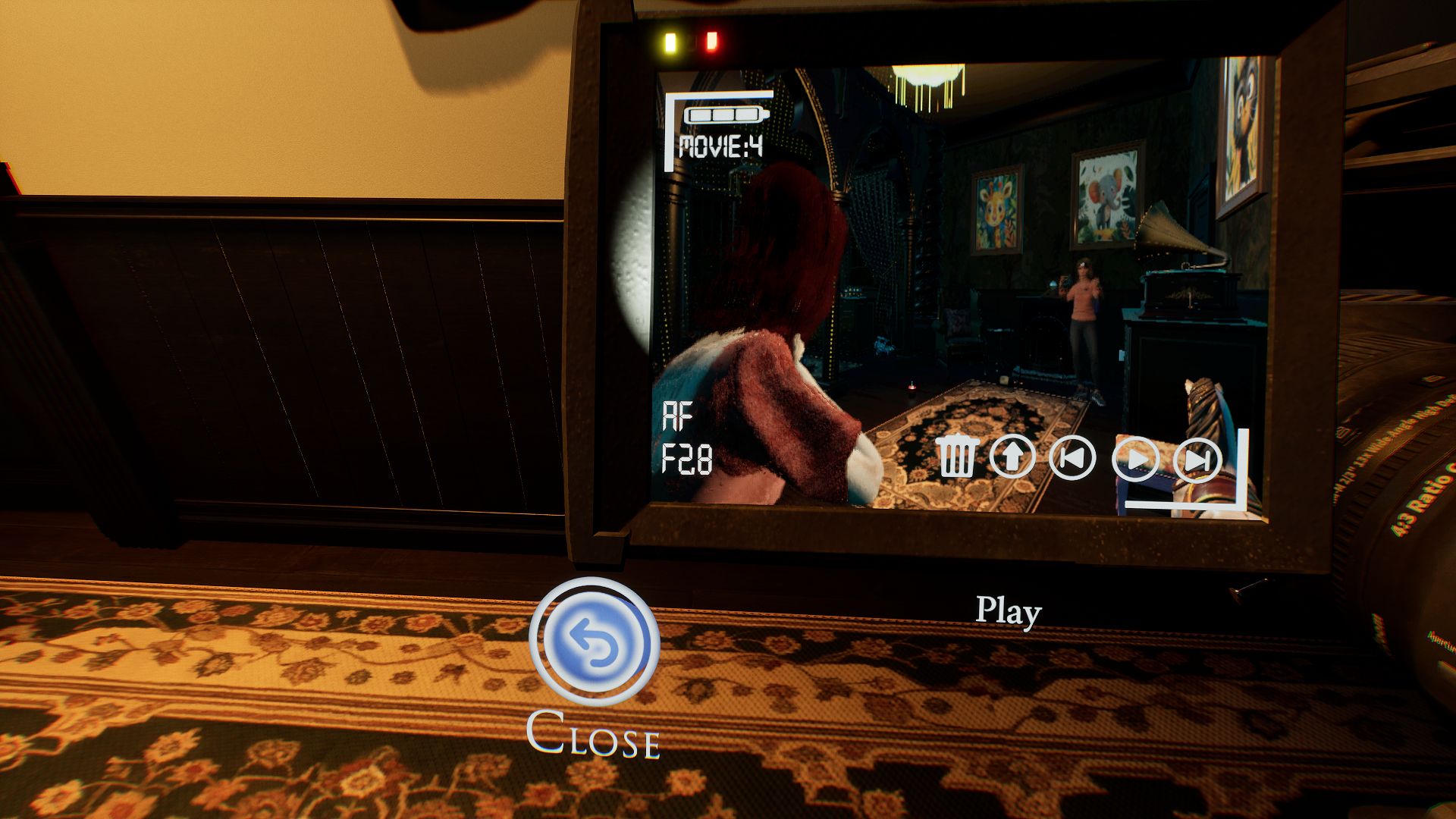
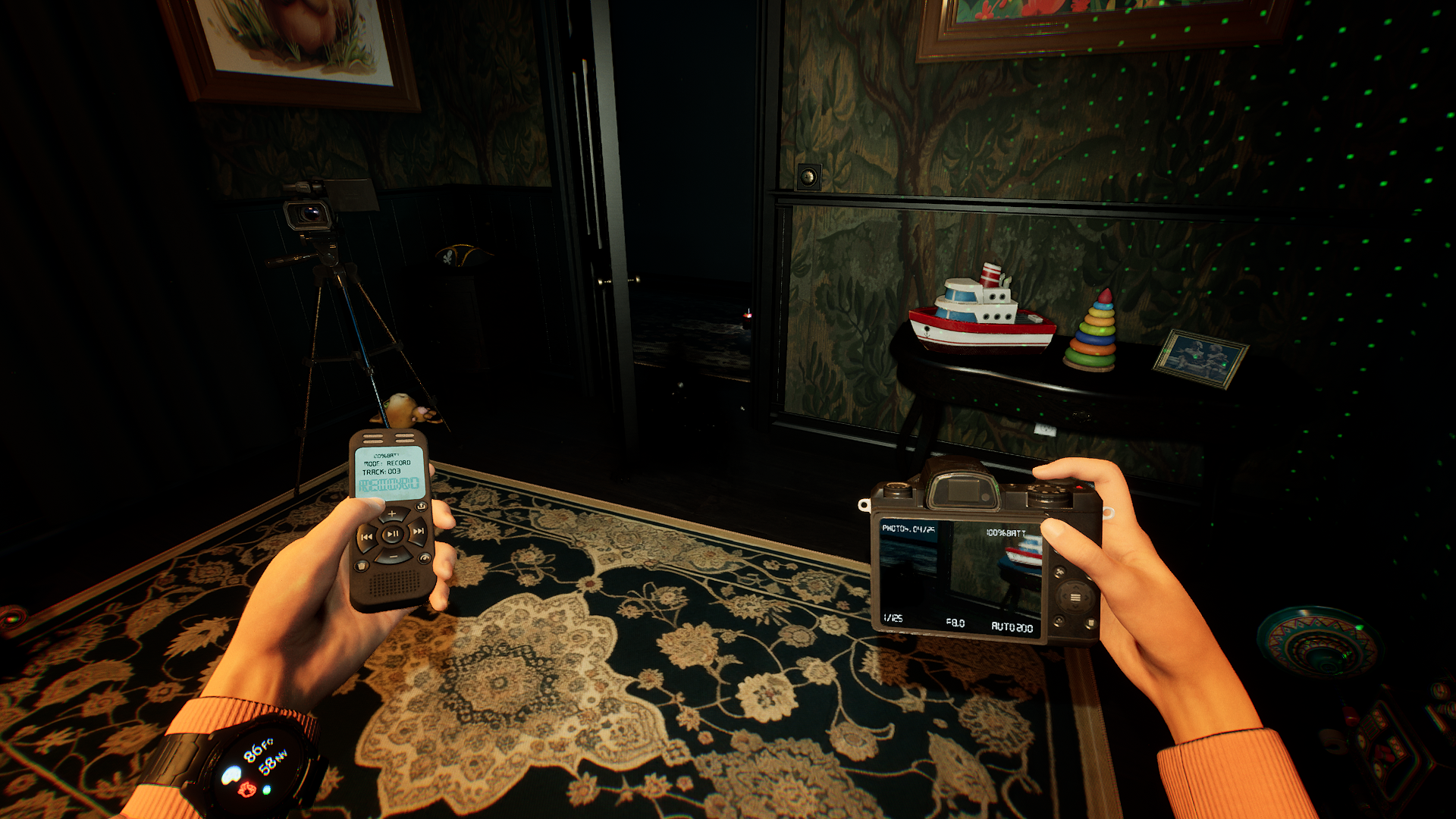
Before we move onto the next stages of the investigations and releasing the ghost, let's talk a little more about Stephanie. As an inexperienced, younger protagonist, she fundamentally changes how you’ll investigate. Conrad is a paranormal expert who treats wendigo attacks with a “That’s Monday for you” attitude, and I love him for that; it’s one of the reasons why he’s such an icon. In contrast, Stephanie is green, so she hasn't quite developed the steel nerves of her mentor yet. This translates to gameplay, as she wears a watch that shows both her focus and her nerve, which are tied to her special provocation abilities. You see, Stephanie can provoke ghosts by using prompts and questions divided into five categories: who, what, when, where, and why. These are questions like “How did you die?” and “Is anyone here?” There are a few effects these provocations can have such as persuading the ghost to make a noise, physically manifest, interact with the environment, and eventually, level up. While provocations are effective, don’t expect a result the second you ask a question. Ghosts are immensely stubborn entities.
Provoking a ghost costs focus, and if you fail to capture evidence of the ghost during activity, then you’ll lose nerve. You’ll also slowly lose your nerve if a ghost gets too close to you. Once your nerve drops to a certain level, your vision gets blurry and your heart starts to pound. If it falls to a critical level, Stephanie passes out and wakes up at basecamp. Getting kicked back to basecamp would be reason enough to take your nerves seriously, but that goes double when you consider that you only have a set amount of time to release the ghost. The investigation begins at 10:00 pm and ends at 5:00 am when all ghost activity stops, so you don’t want to waste time walking back to a room on the third story. On the bright side, Stephanie’s nerve rapidly regenerates while standing near basecamp, giving the space an air of safety and comfort in an otherwise alienating environment. The provocation system and timed investigations are not only a fantastic solution to the pacing problems of the first game; they add stakes as well. Though, it’s important to note, you can turn off both nerve mode and timed mode in the settings for a more chill ghost hunting experience.
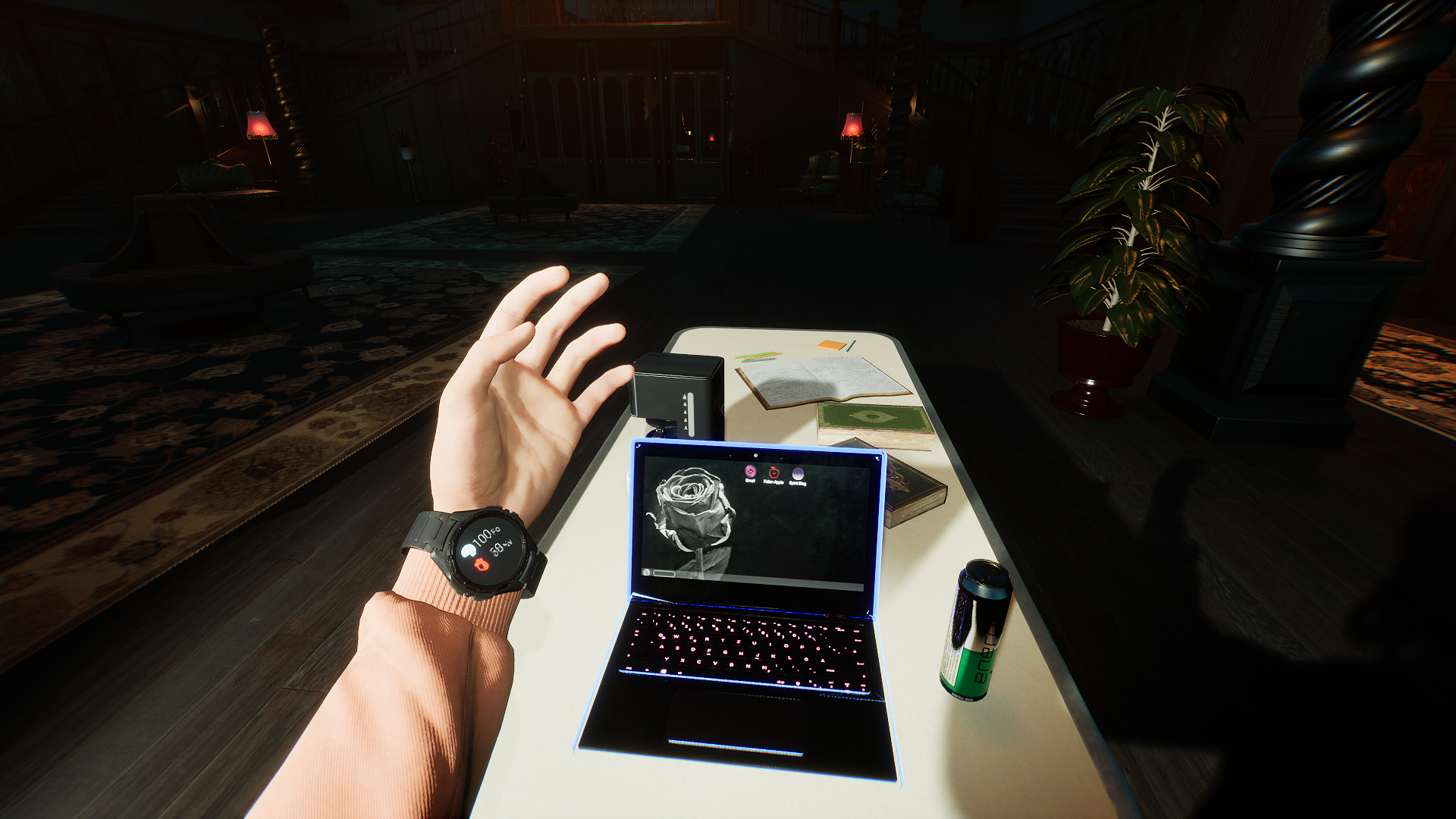
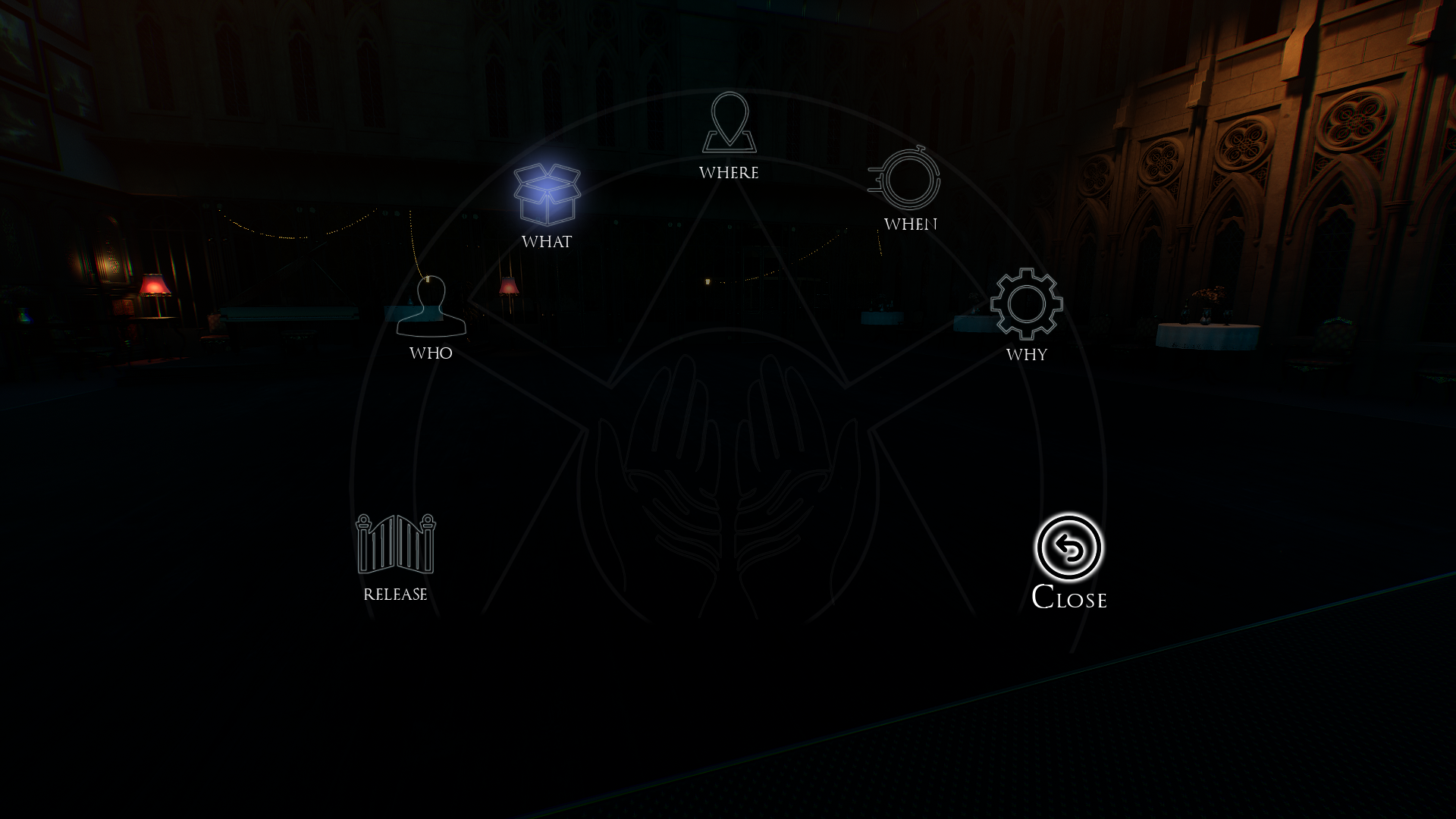
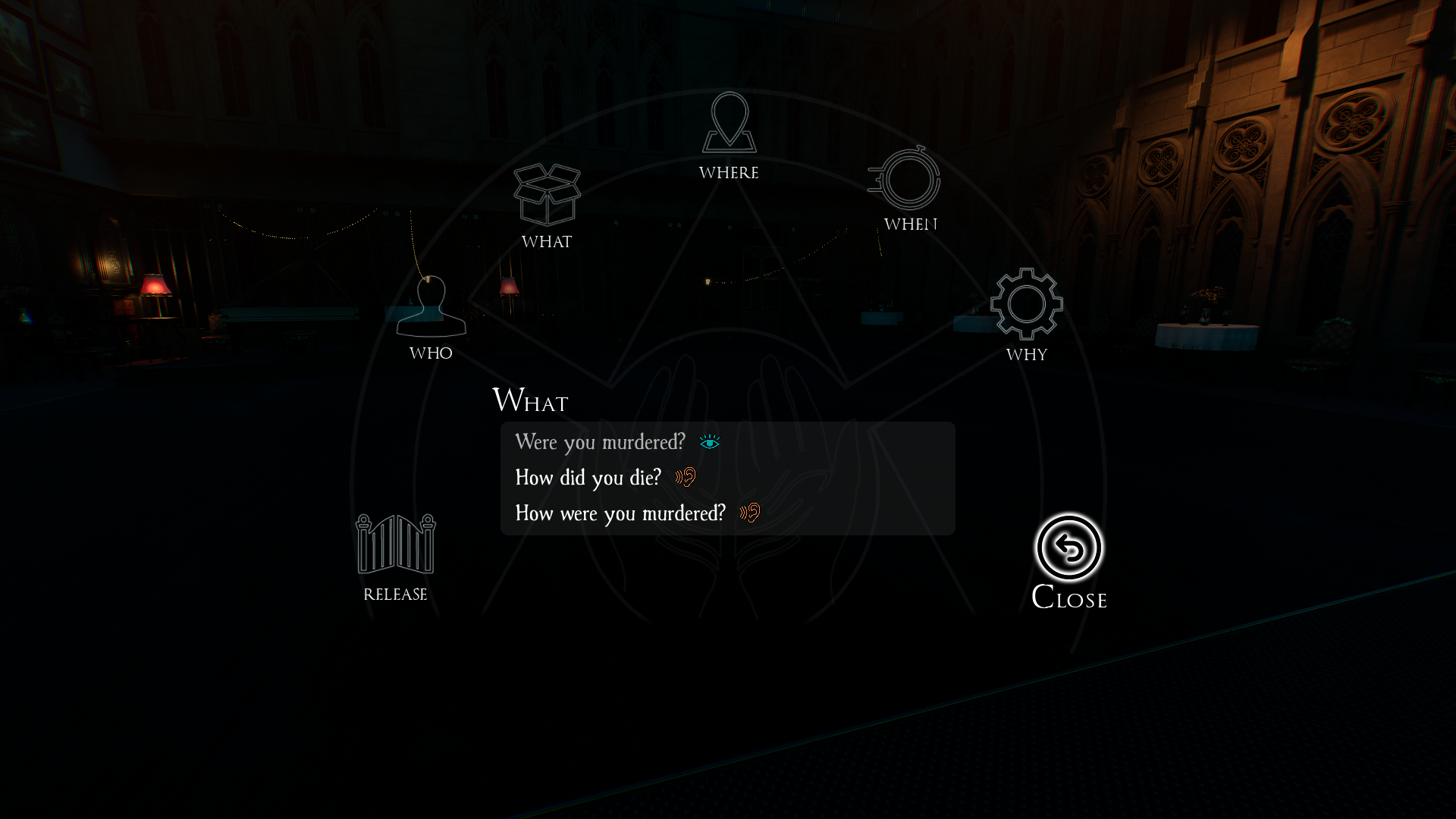
Let's say that you’ve gotten the ghost to max level and gathered some evidence by using provocations: a few photos and some audio. Time to release the ghost, right? Well, not quite yet. In order to help a ghost move on, you’ll need to address them with their full name, life passion (including a physical item), and cause of death. This is the part where you head back to base camp and look over the ancestry records on Stephanie’s laptop. When I said the mansion is historic, I wasn’t being dramatic; the influential family that calls it home has lived in it for well over 100 years. Naturally, that leaves many suspects. Luckily, each profile includes information on the individual’s death and hobby, as well as the location of a physical hobby item. Sometimes you’ll get lucky and a ghost will straight up tell you it was strangled, though audio clips are a little harder to make out when the ghost is lower level. Other times, you’ll have a photo of the ghost grasping its throat. Was it poisoned? Strangled? Choking on food? You’ll have to refine your search. You’re always looking for that smoking gun.
As I said at the start, Paranormal PI is a love letter to real-life ghost hunting, which is a long process. The problem arises with translating that to gameplay without making ghost hunts feel tedious. You were on the ghost’s time while you resolved their problems, hence why I titled the Paranormal PI review “ghost therapist”. In Provocations, on the other hand, you can solve investigations quite fast if the right circumstances line up. Some might critique the change in pace but I welcome it wholeheartedly. After all, this series is meant to be somewhat of a simulation of actual paranormal investigations, which, at the end of the day, is a craft with tools, techniques, and mastery. It honestly feels like I’m gaining the skills of a ghost hunter and becoming more efficient with investigations. Learning and gaining proficiency just feels good.
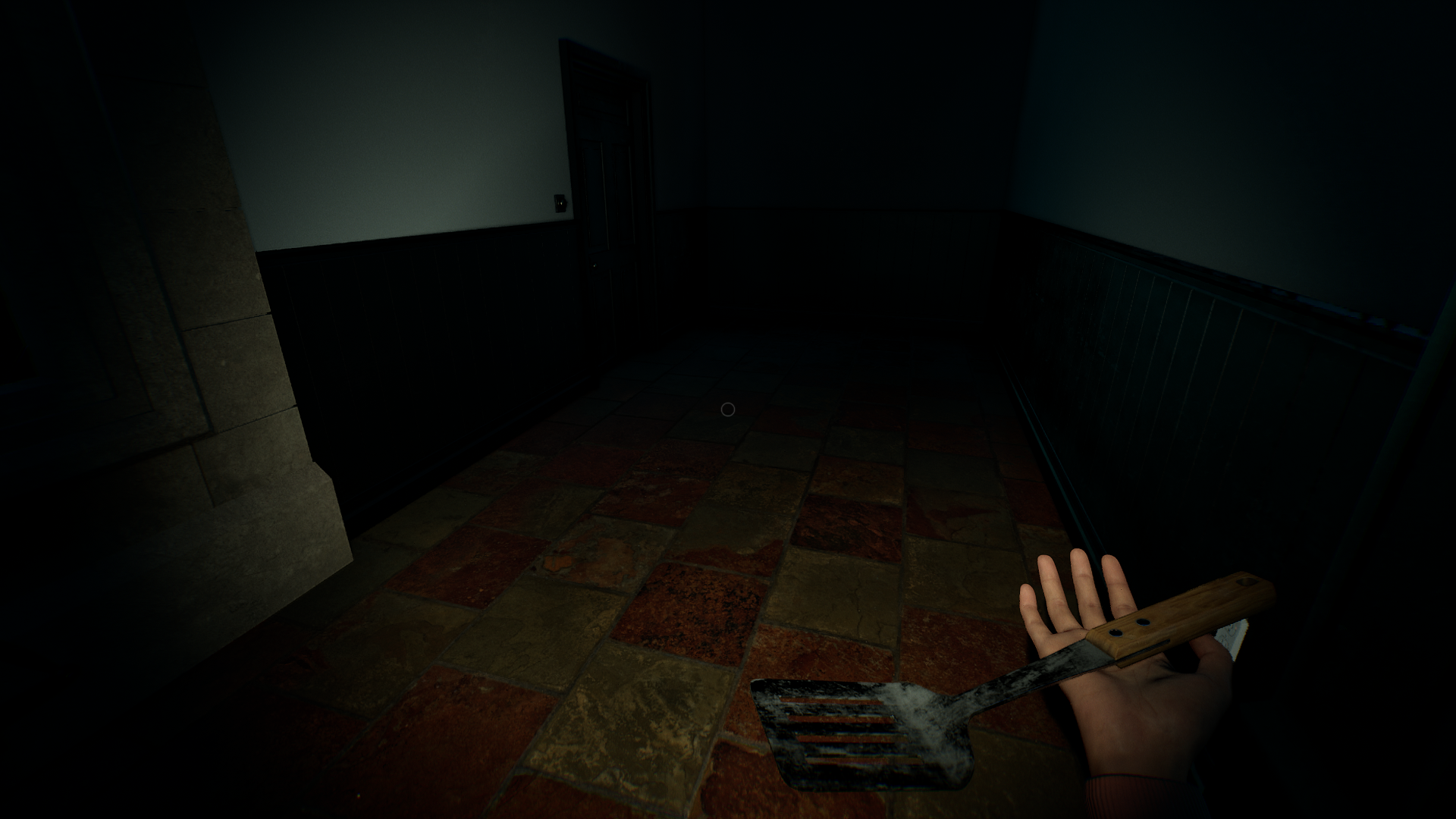
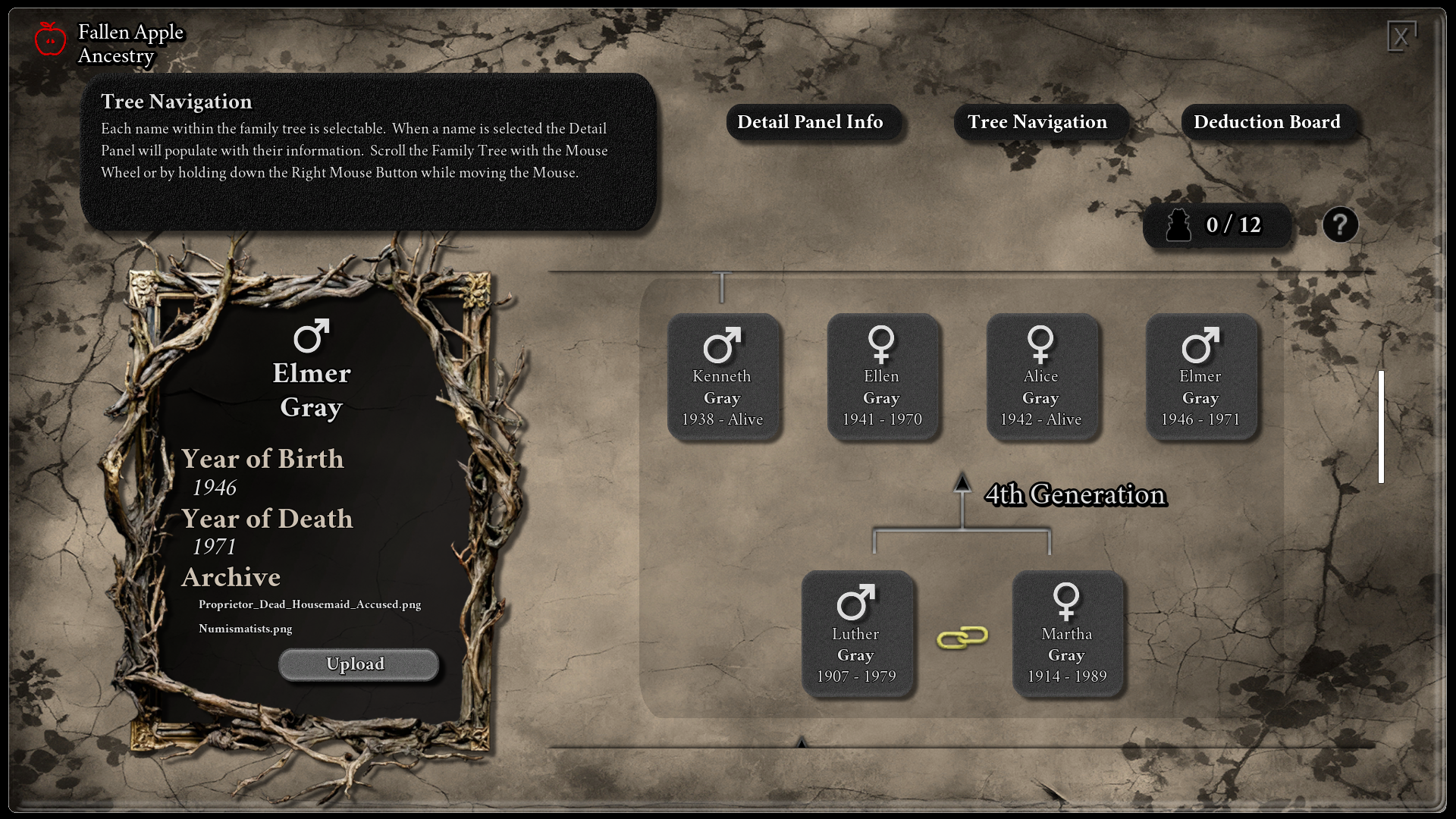
The game makes it easy to organize your evidence in an immersive way. Stephanie carries a tablet around with her, and she uses it as a ghost deduction board. It’s here you can upload your evidence and ancestry profiles, and mark them with color-coded symbols which act as the red string on your digital cork board. Any of your equipment that produces media has physical buttons used to upload and delete media, as well as click through your stored photos, videos, and audio. I appreciate how the game uses diegetic UI elements, like physically cycling through your evidence, increasing or decreasing volume on your recorder, and closing out of Stephanie’s laptop using a power button. These little touches can lead to frightening moments. There were times when a ghost pops up while I was fumbling around with the camera controls, and I had to quickly recover to prevent nerve loss. Overall, it’s important to remember that the deduction board is an invaluable tool that saves you the time of having to walk all the way back to base camp whenever you need info.
After you've whittled down your search and chosen a prime suspect, it’s time to confront the ghost. Two pieces of gear I left out before are the Mugwort Smudge and the Jacob’s Ladder. The former is necessary for provoking and releasing a certain kind of ghost, and the ladder needs to be set to the right one of three frequencies corresponding with the ghost’s type in order to release it. That’s right, there are three types of ghosts: residual, intelligent, and shadow, each with its own personality quirks and complications. You’ll know pretty immediately which kind of ghost is which, as they’re all visually distinct—and visually interesting to boot. Intelligent ghosts often come with ghost orbs, shadow ghosts are caked in darkness, and residuals come across as plumes of energy which gain shape over time. Intelligent ghosts and shadows will interact with you, whereas residuals are more like imprints on the world, requiring special provocations and the Mugwort Smudge to interact with. Intelligent ghosts will hide from you at times. Shadow ghosts, on the other hand, are almost trickster-like in personality, appearing in the periphery of your vision, and destroying light sources in the area.
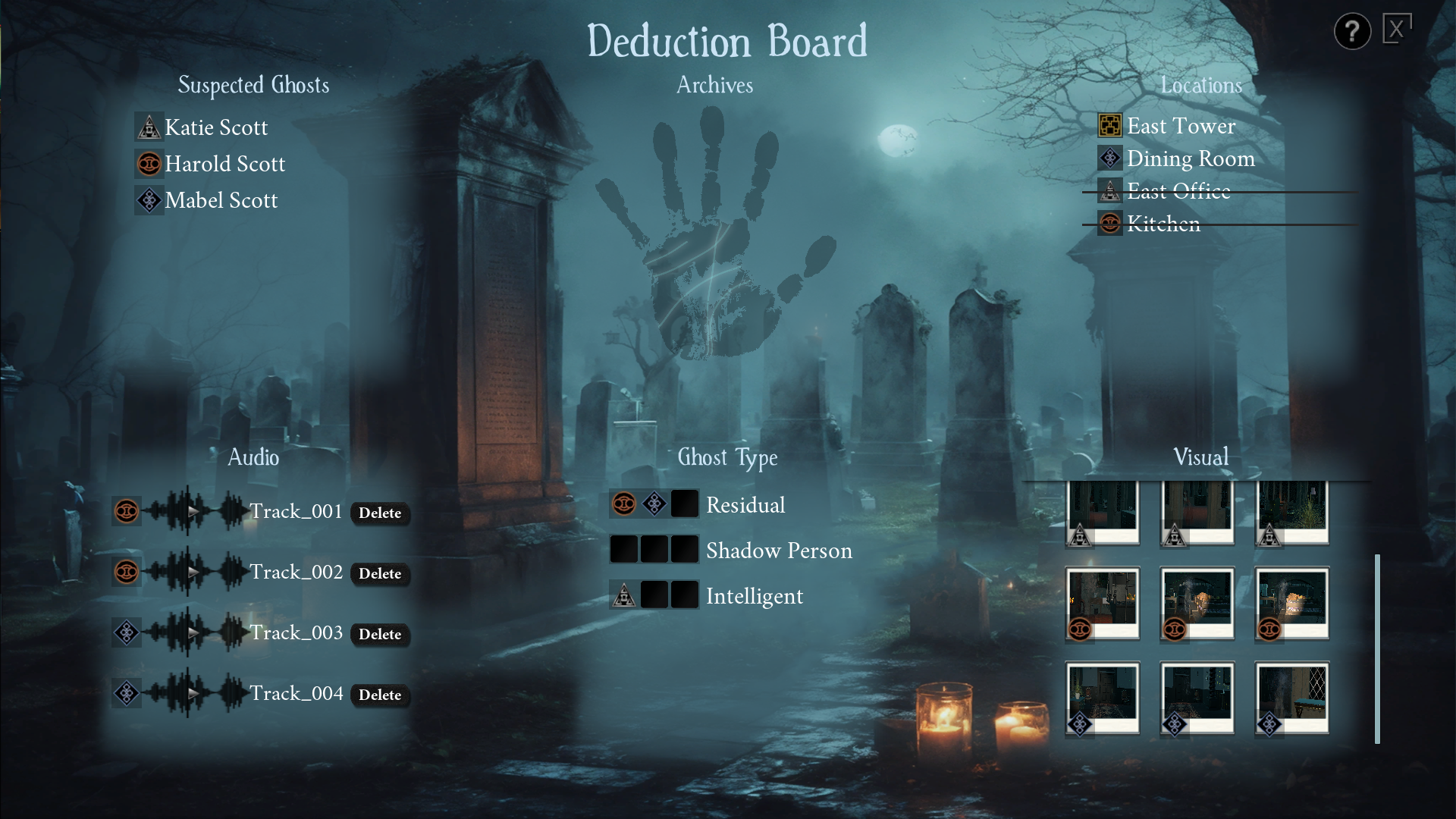
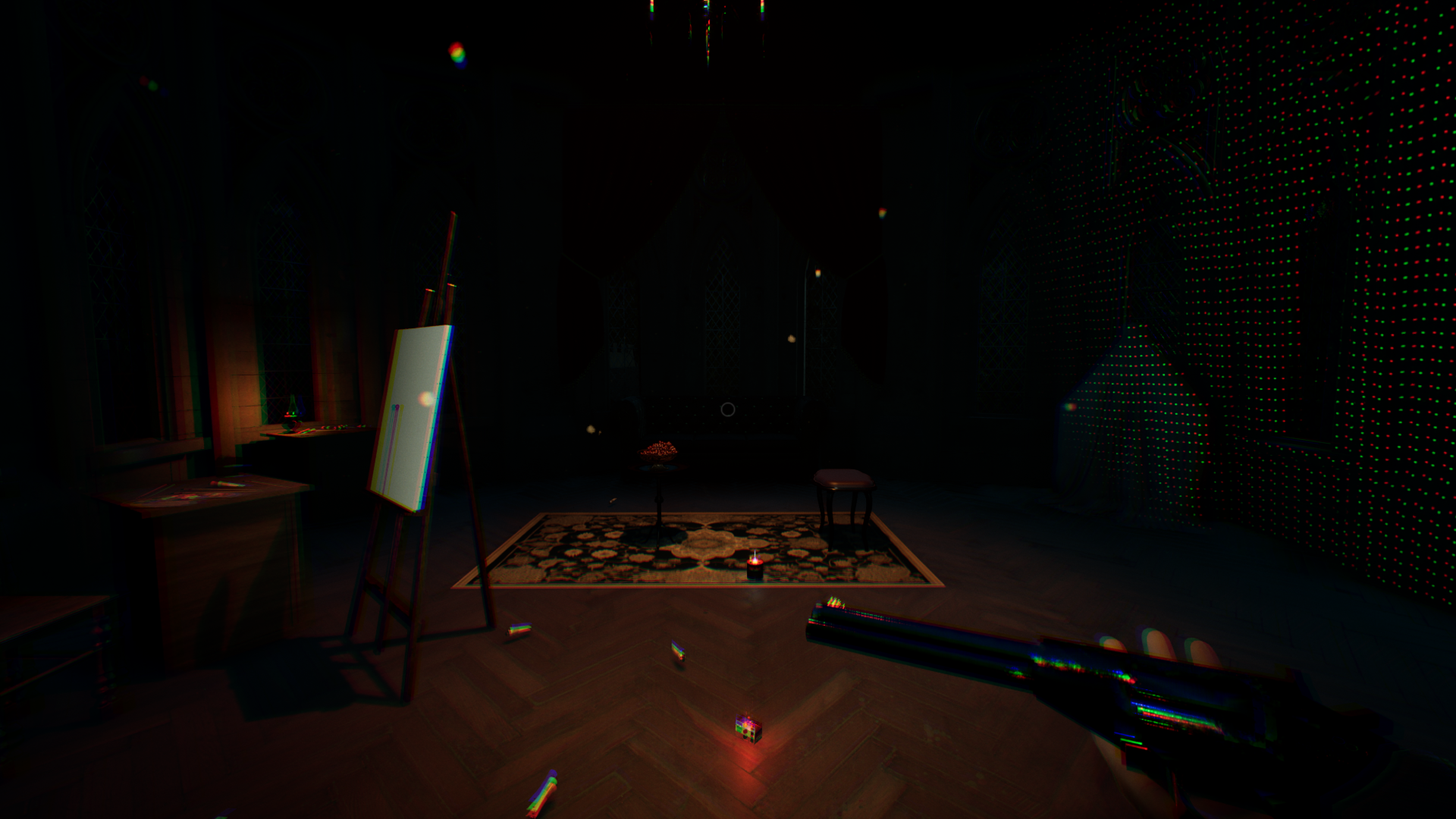
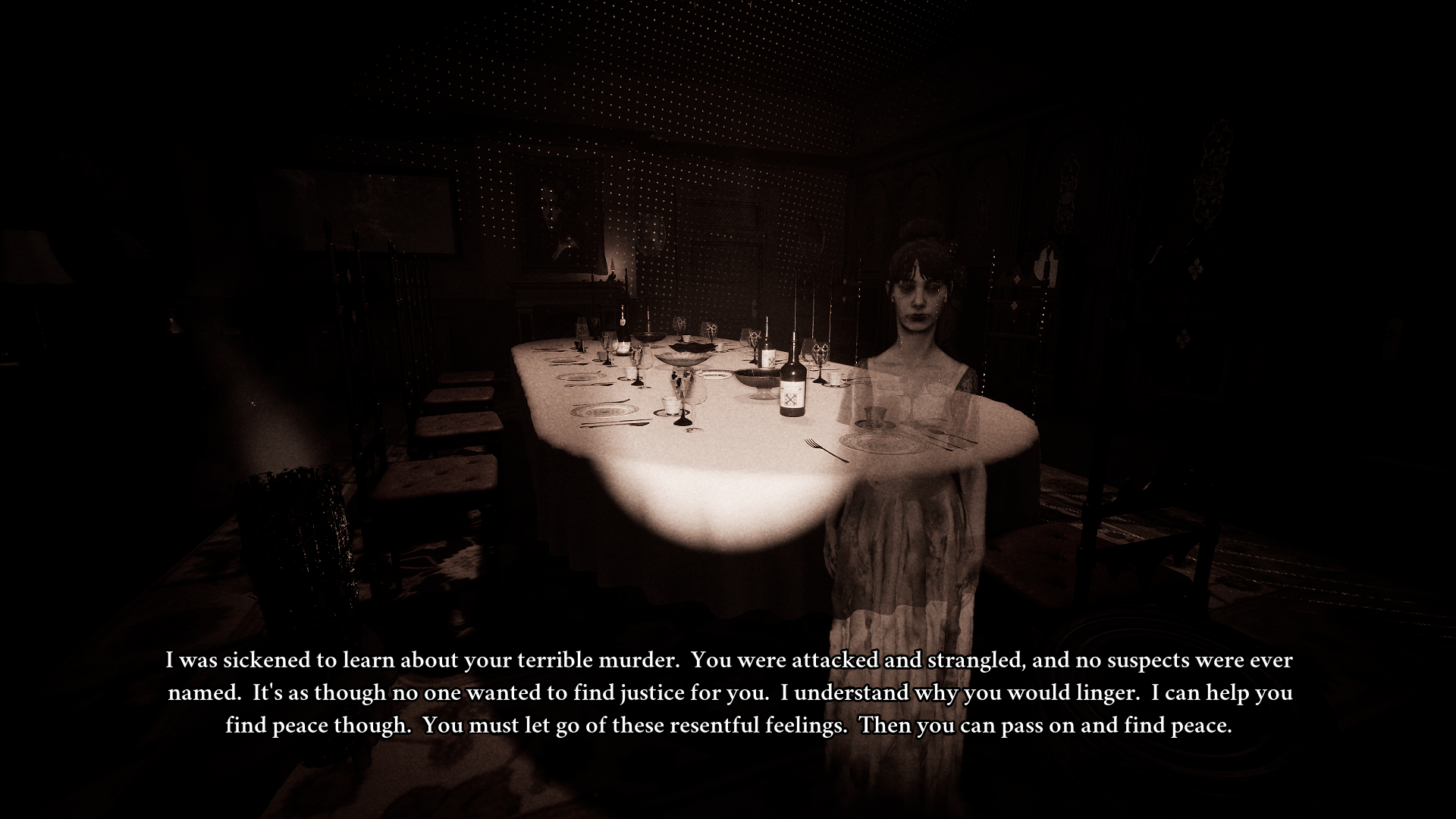
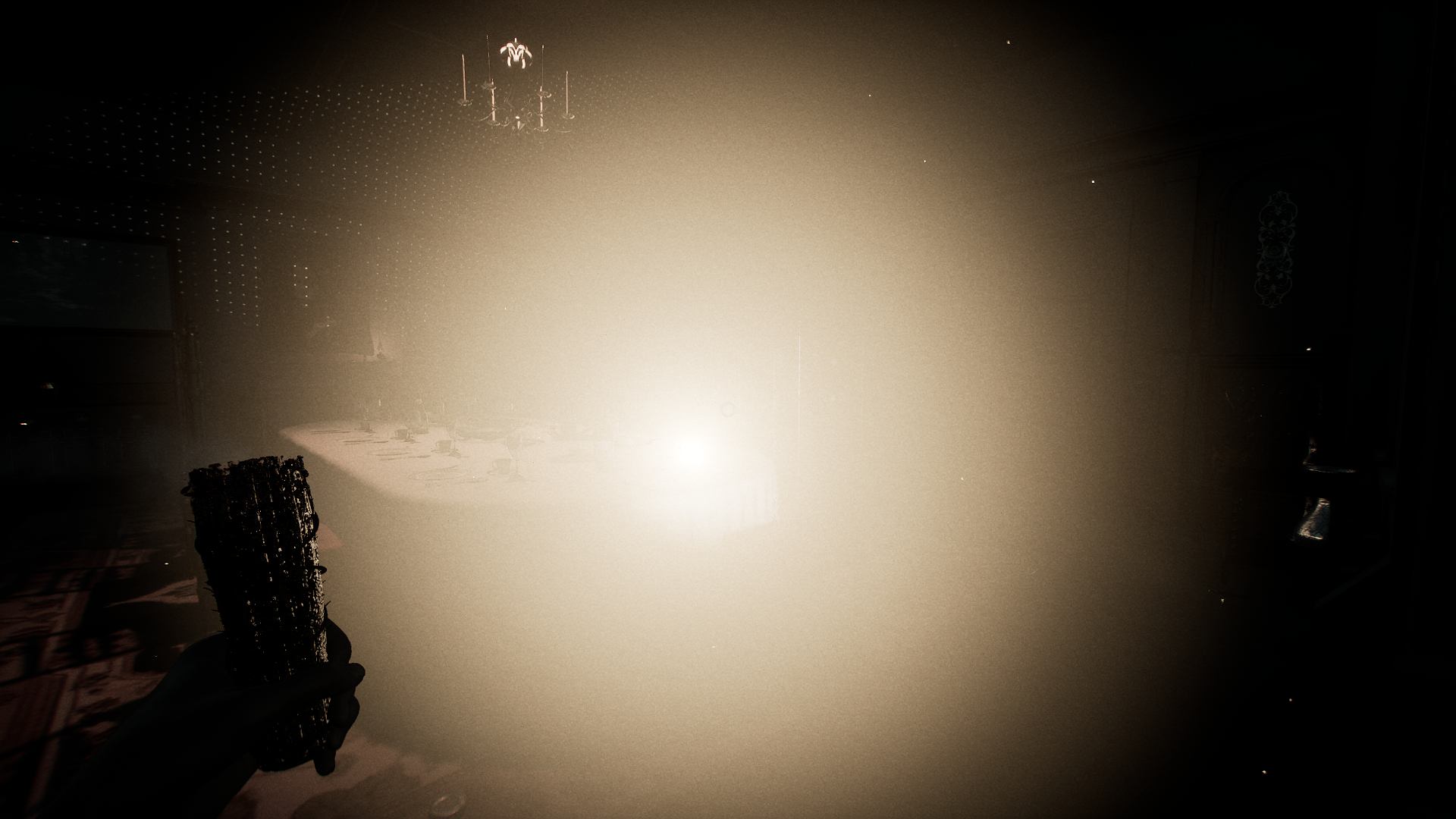
Ghosts’ eccentricities can lead to chill-inducing moments. At one point, I was having trouble locating a ghost after asking a visual provocation. My nerve was dropping, so I knew it was appearing, but I didn’t see it. I got some more audio clips, went to my laptop to gather family records, and upon returning to the ghost room, I saw a figure crouching behind a chair. He was just jittering in place, watching me. I was stunned. All I could think was, “Is that where he was before?” Were his cold, dead eyes tracking me while I scanned for him in vain? I was unnerved in the best possible way. You bet I didn’t feel safe for a while after that!
Ghost behavior might vary, but for the most part, all you need to do to release any of them is select the release option in the provocations menu, place down the Jacob’s Ladder with the right frequency for the ghost type, hold the ghost’s hobby item, and then select the right name, hobby, and cause of death. Once you do that, the ghost will move on, and you can walk out the front door, where the game ends. Or is it?
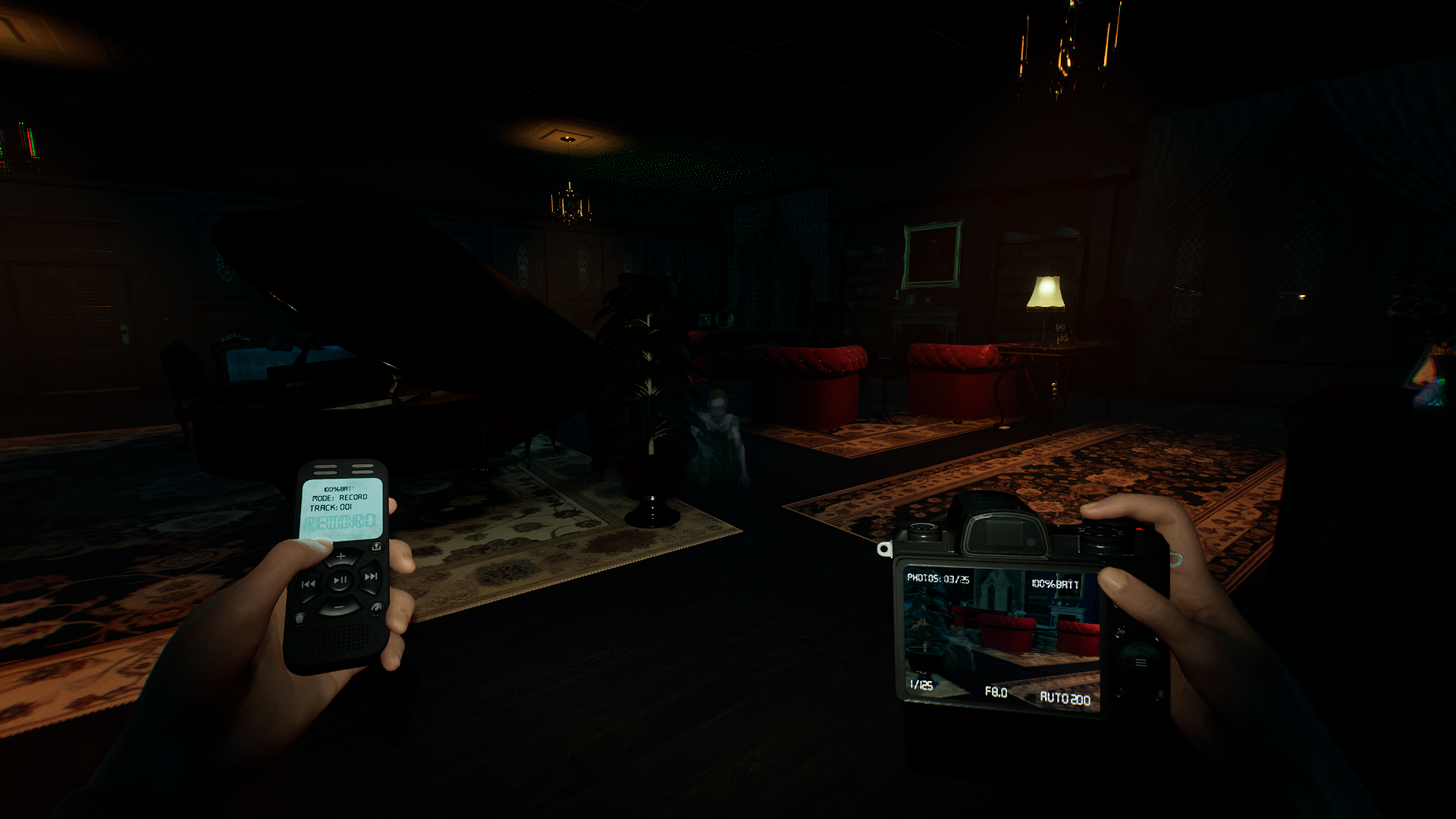
What I didn’t mention is that there’s an overarching story. Magnificent Drive belongs to an incomprehensibly wealthy family whose lore goes back decades; you can bet there are skeletons in the closet. You will repeat ghost hunts many times in many different rooms, occasionally coming across archive evidence, which you need to photograph and upload to your deduction board. These include items like old newspaper clippings regarding New Eidolon’s past and old letters detailing business dealings and family correspondence, as well as missing persons posters and more. Picking up archive evidence and completing ghost investigations in new rooms progresses the story, with each chapter spawning new archivables. This story progression keeps the game fresh and the intrigue flowing. I won’t spoil anything, but I must emphasize that at certain moments, the story left me stunlocked with shock. It’s the “wait a second” moment where all of the information from all of the archives you’ve observed starts clicking together, and horrific realizations wash over you. If you played Paranormal PI, keep an eye out for familiar names while looking over the archives.
It would be remiss of me to talk about the story without talking more about the mansion. It goes beyond being just a setting; it’s a character itself. The edifice stands as a once stalwart protector turned jailer of the souls it once safeguarded. While I love the broader setting of New Eidolon and would have loved to see more of it outside of the property, I have to say that the story of Magnificent Drive and its inhabitants was fully realized, leaving me more than satisfied.
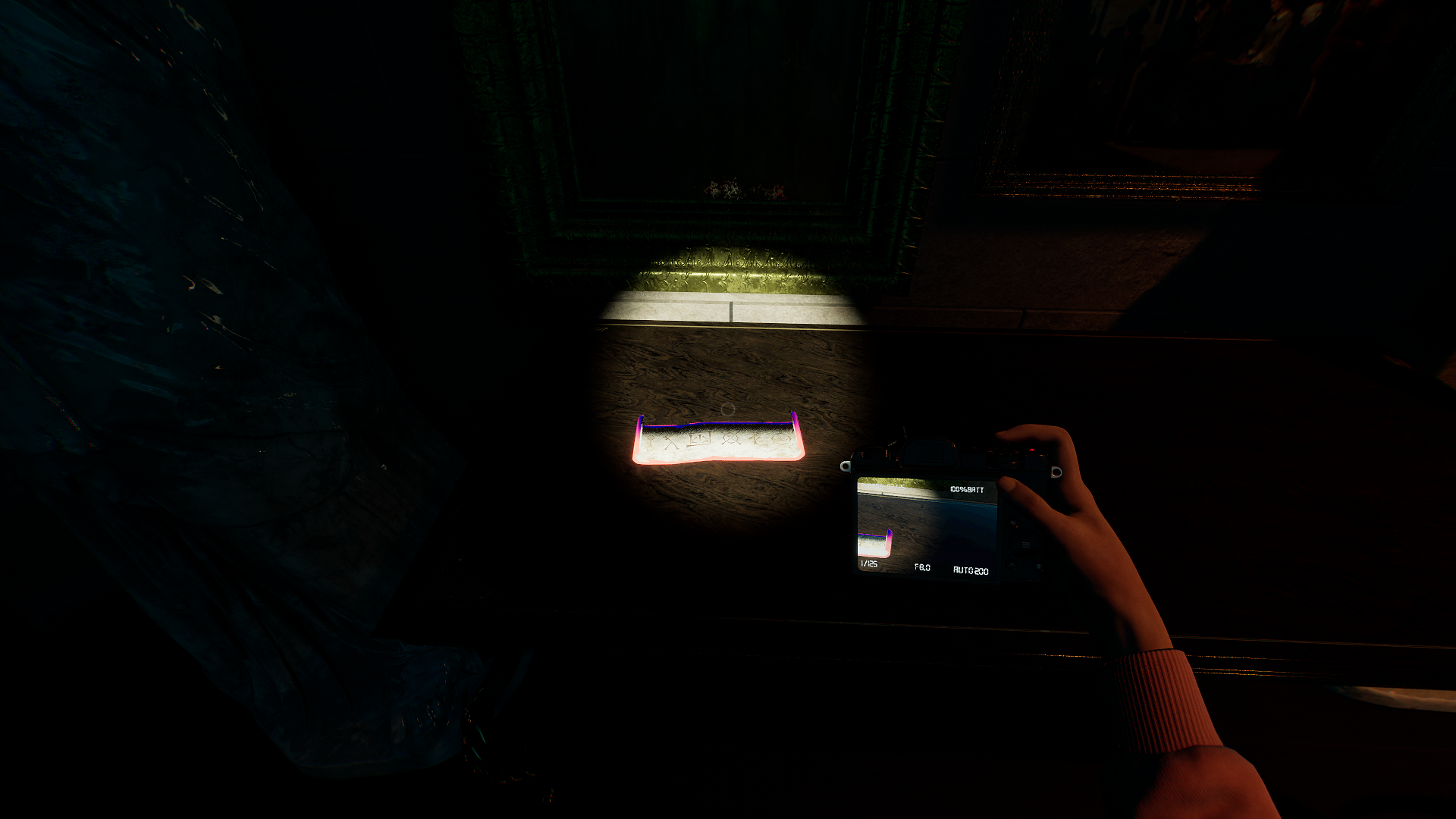
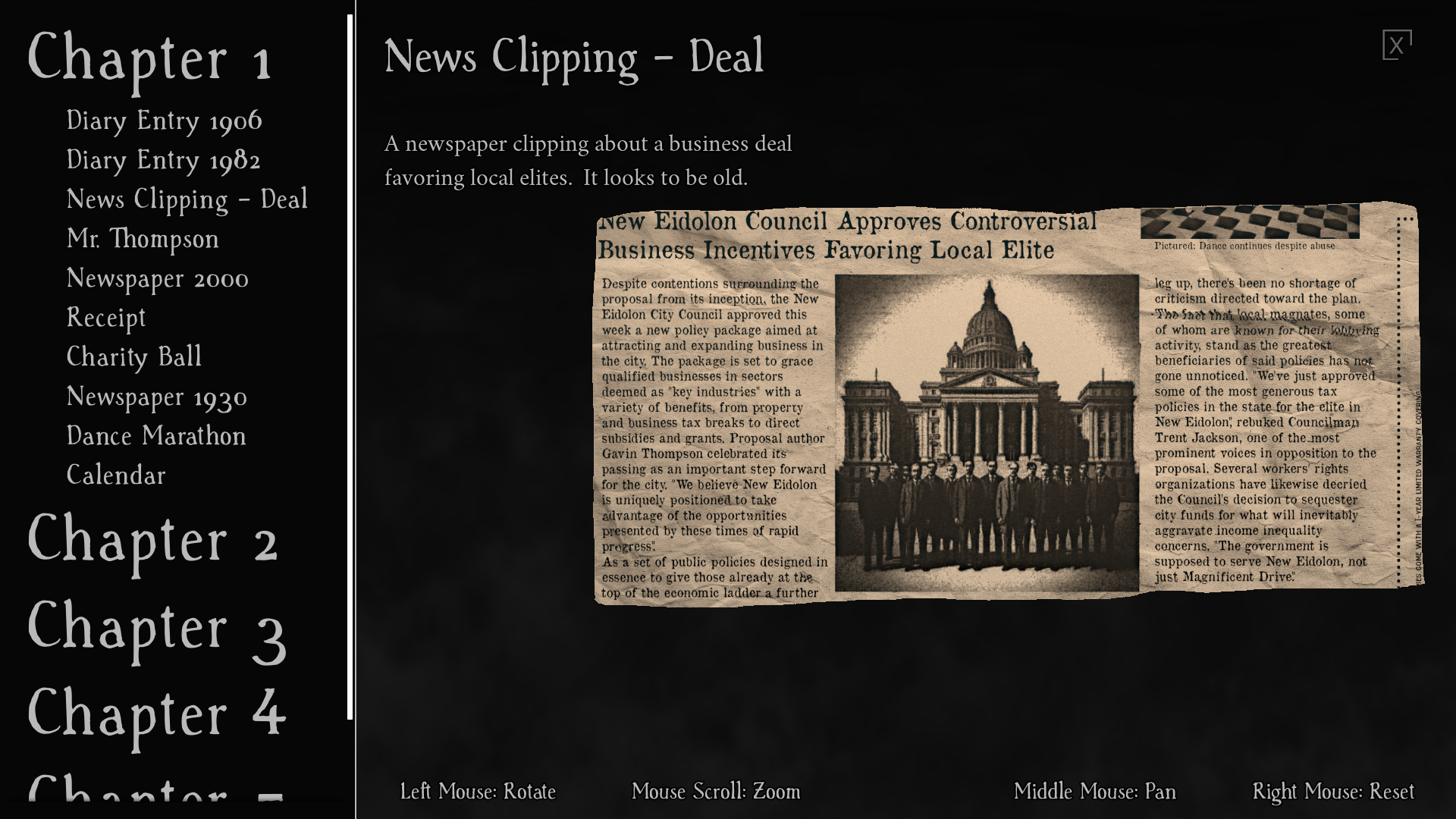
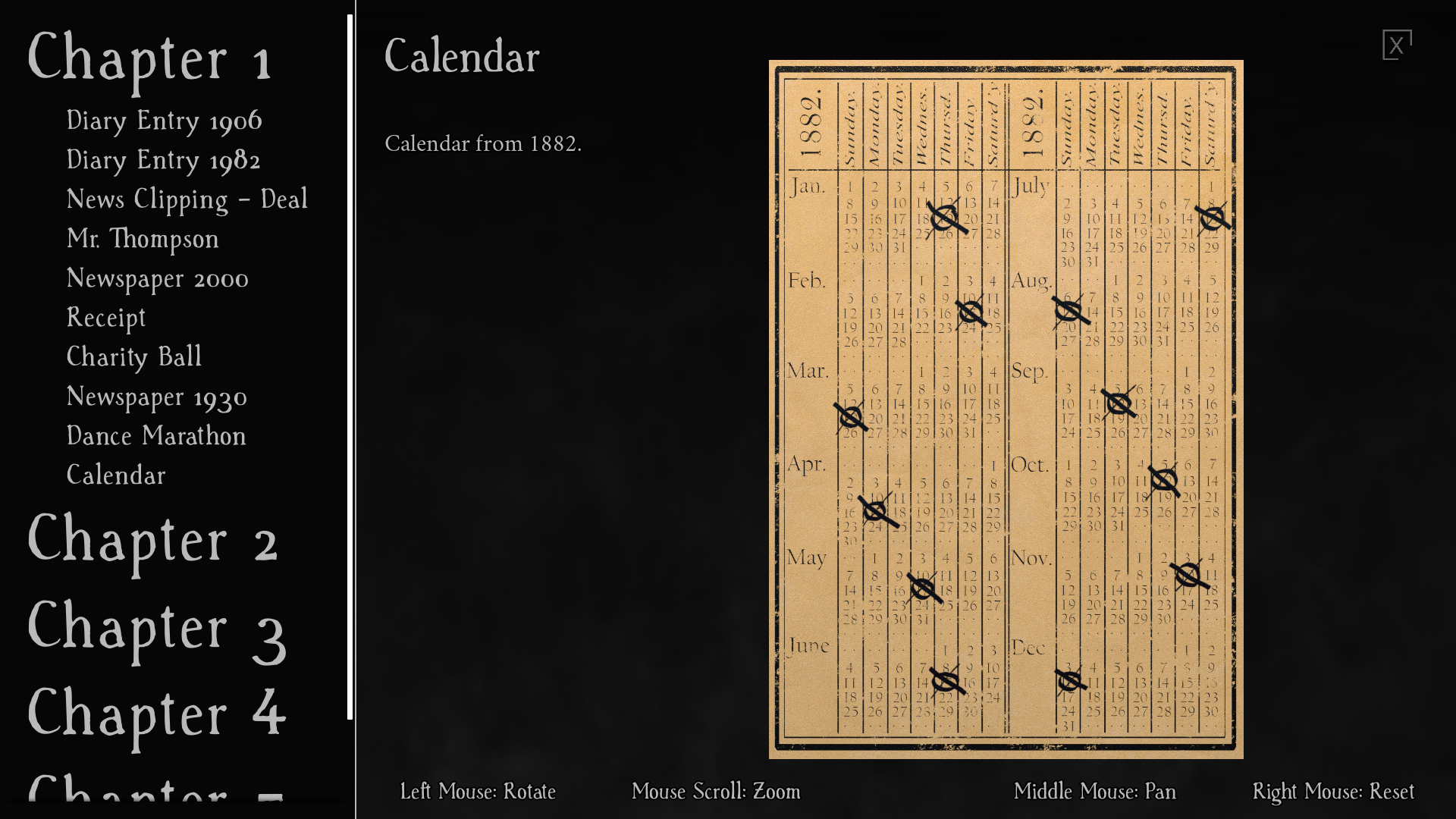
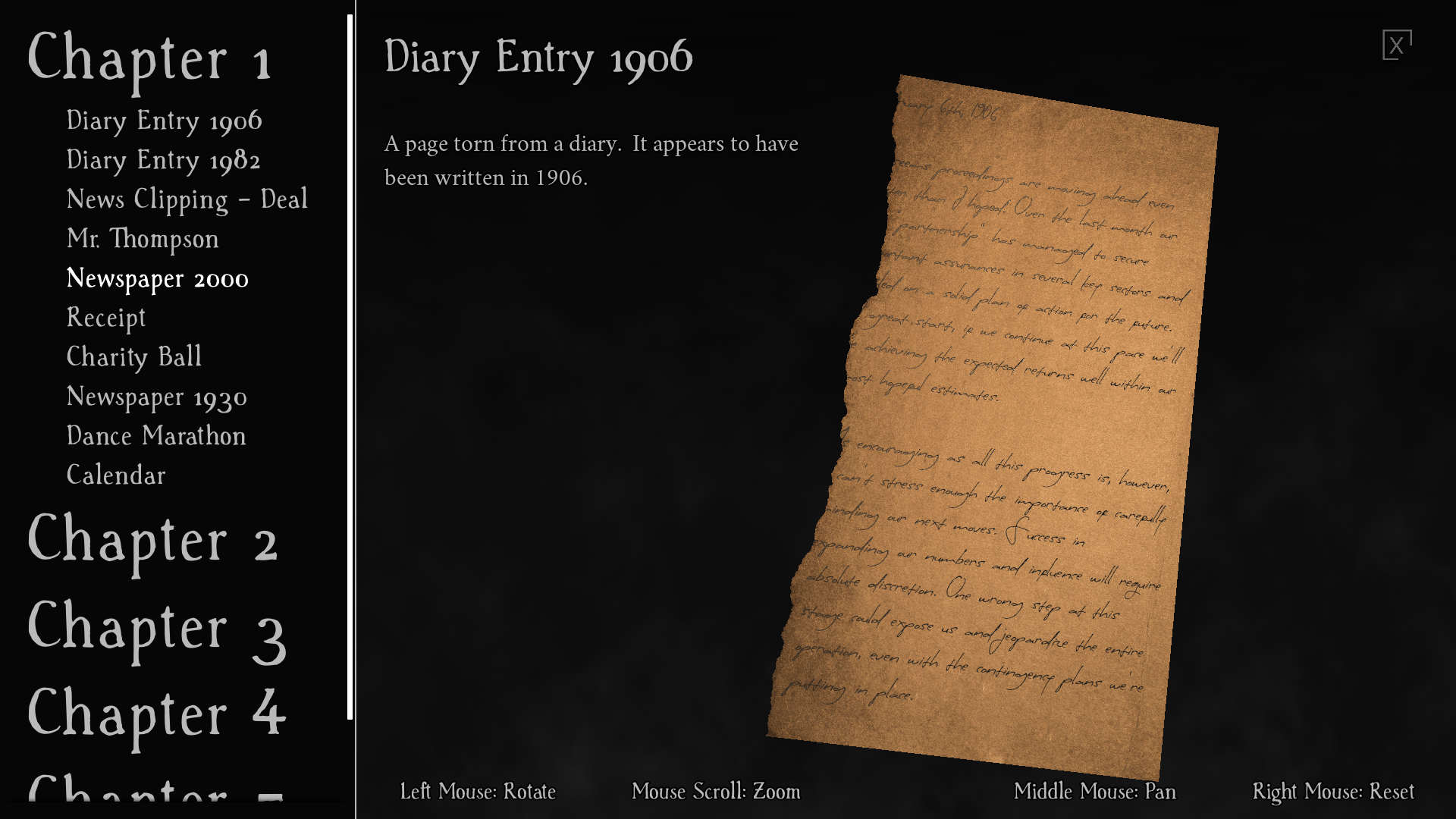
When it comes to the aesthetics of the locale, the high-quality visuals aren’t wasted, as the family’s opulence is on display everywhere you look. Intricate designs, expensive decor, and fancy artwork line every wing on multiple floors, and every amenity one can think of can be found. While the sheer splendor of the mansion is immense, so is its size, and I got lost in its sprawl more than once. You know this family doesn’t Zelle their eggs. On another note, there’s a plethora of human-looking objects in the mansion, which adds to the slow-burn terror inspired by the eerie location. The result is the player's fear rising like a Shepard Tone. Don’t even get me started on the museum room, which is full of ghostly marble statues.
It’s not all about looks either. The room’s size and shape affect gameplay, with players needing to account for equipment setup, flashlight usage, and maneuvering around the ghost. The mansion is sprawling, and rooms vary in size and shape. There’s quite a bit of thought that goes into setting up your ghost detection gear. At one point, I was in a room small enough that the Dots pen covered basically all of it, so I put the EMF pod just outside the door so that I could have an audio cue for when the ghost was away. Some rooms might be large, giving you plenty of room to maneuver around a ghost if you need to preserve nerves, but making it harder to track them. Other rooms might be small, meaning the ghost might do a number on your nerves, but you’ll pretty much always know where it is. If a ghost blows out every lightbulb in a small room, then your radius flashlight will have you covered. If that happens in a large room, you’ll have to switch to the focus light for more illumination, but it’s only in a tight circle, possibly giving you tunnel vision.
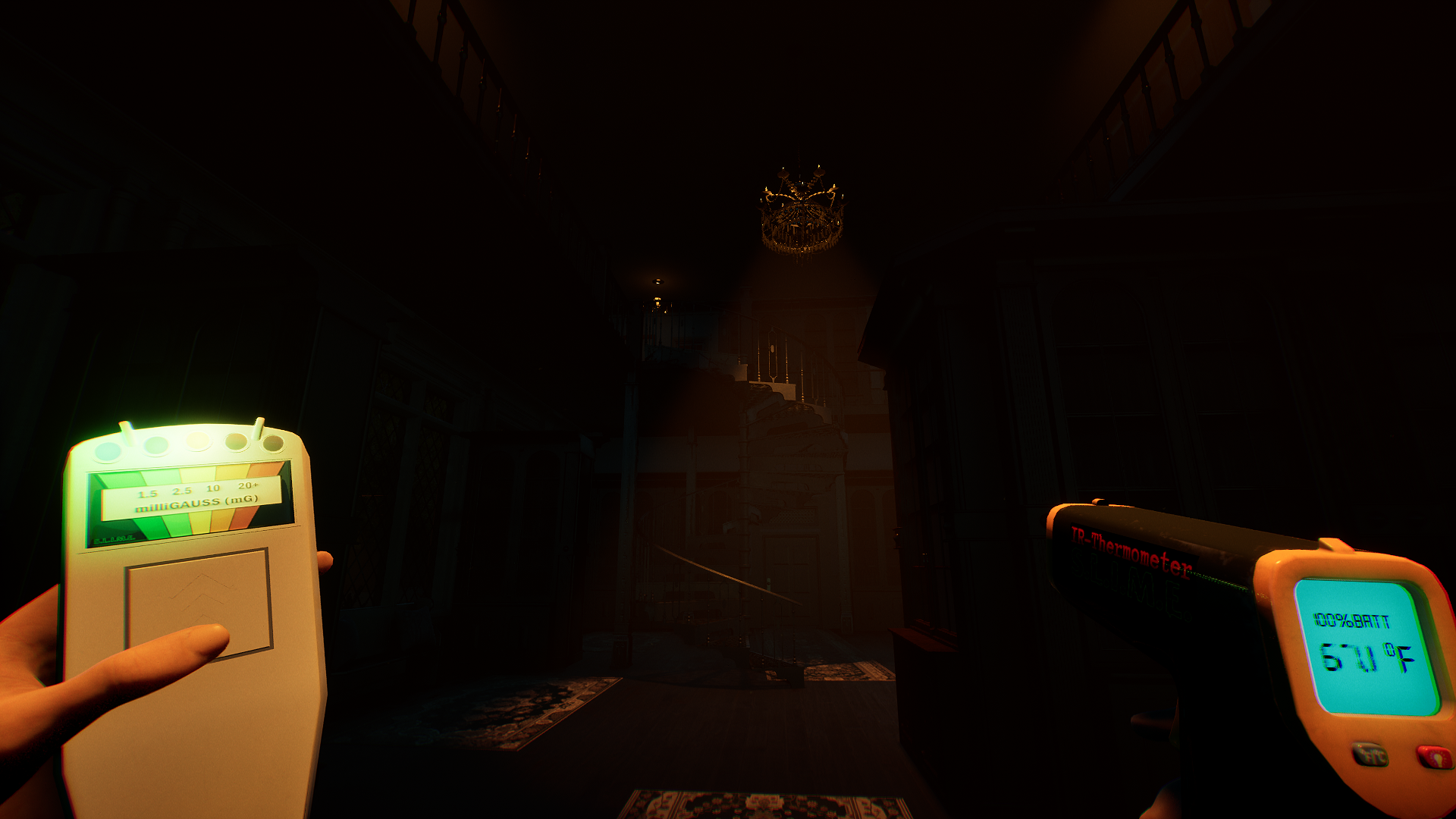
The only thing to disappoint me about Magnificent Drive was the courtyard. While it’s classically beautiful, I feel it was underutilized. You see, right near where the courtyard transitions from court into a greener area of the yard, there’s an invisible wall. It’s quite puzzling, given that I’m pretty sure I can see hedge walls or fancy fencing that would have blocked me off anyway. This was disappointing on two levels. The first is that it’s such an abrupt, unnatural stop. The second is that I would have loved to explore a bit more of the property, possibly an extended yard or garden, or even a hidden forest grove—the ultra-elite love doing weird stuff in those! Think of the possibilities! It wouldn’t be too out of the ordinary for the series, as Paranormal PI had an area that was quite woodsy. Anyways, it’s not a major problem, it’s just a missed opportunity in my view.
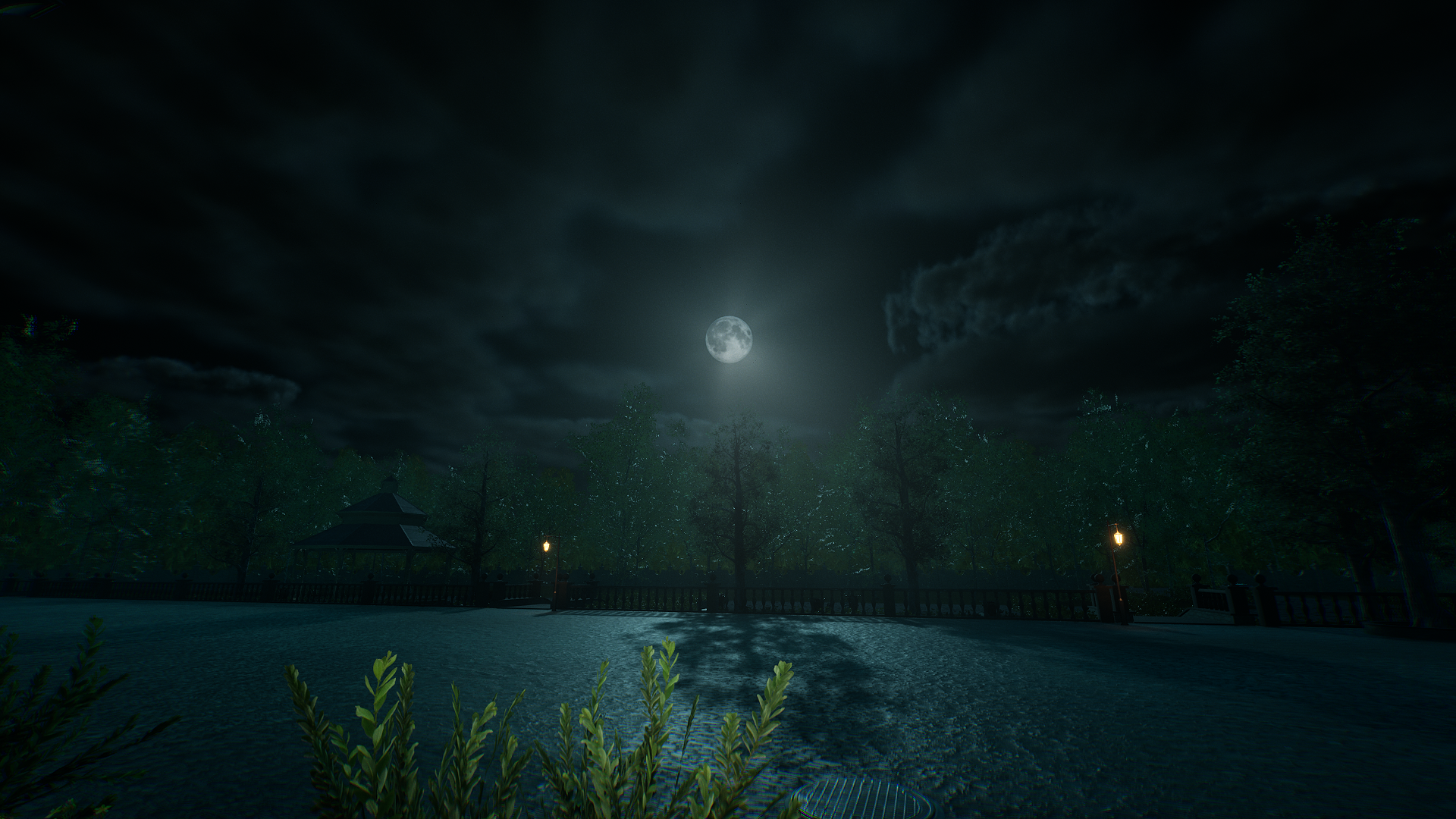
Moving on to the sound design, it’s a strong point for the game. Magnificent Drive is an old mansion; it has creepy noises, some paranormal, some naturally occurring. There’s no background music or anything, just ambiance, like the hiss of the wind when you get close to windows, the squeak of the floorboards and the thuds of Stephanie’s shoes as you walk, and the subtle tick of a grandmother clock. All of these little sounds build a growing bubble of tension—until it inevitably pops from a louder noise like the loud banging of an old furnace or the sudden appearance of a ghost. That said, there is the occasional jump scare, but it's not a flash on the screen; instead, the ghost appears and rushes at you while begging for help. It's not a spike in adrenaline followed by slight frustration at a cheap scare. It's more like the feeling of seeing roadkill of baby animals; it's really sad and jarring, and while you just hope it doesn't happen again, you know it probably will.
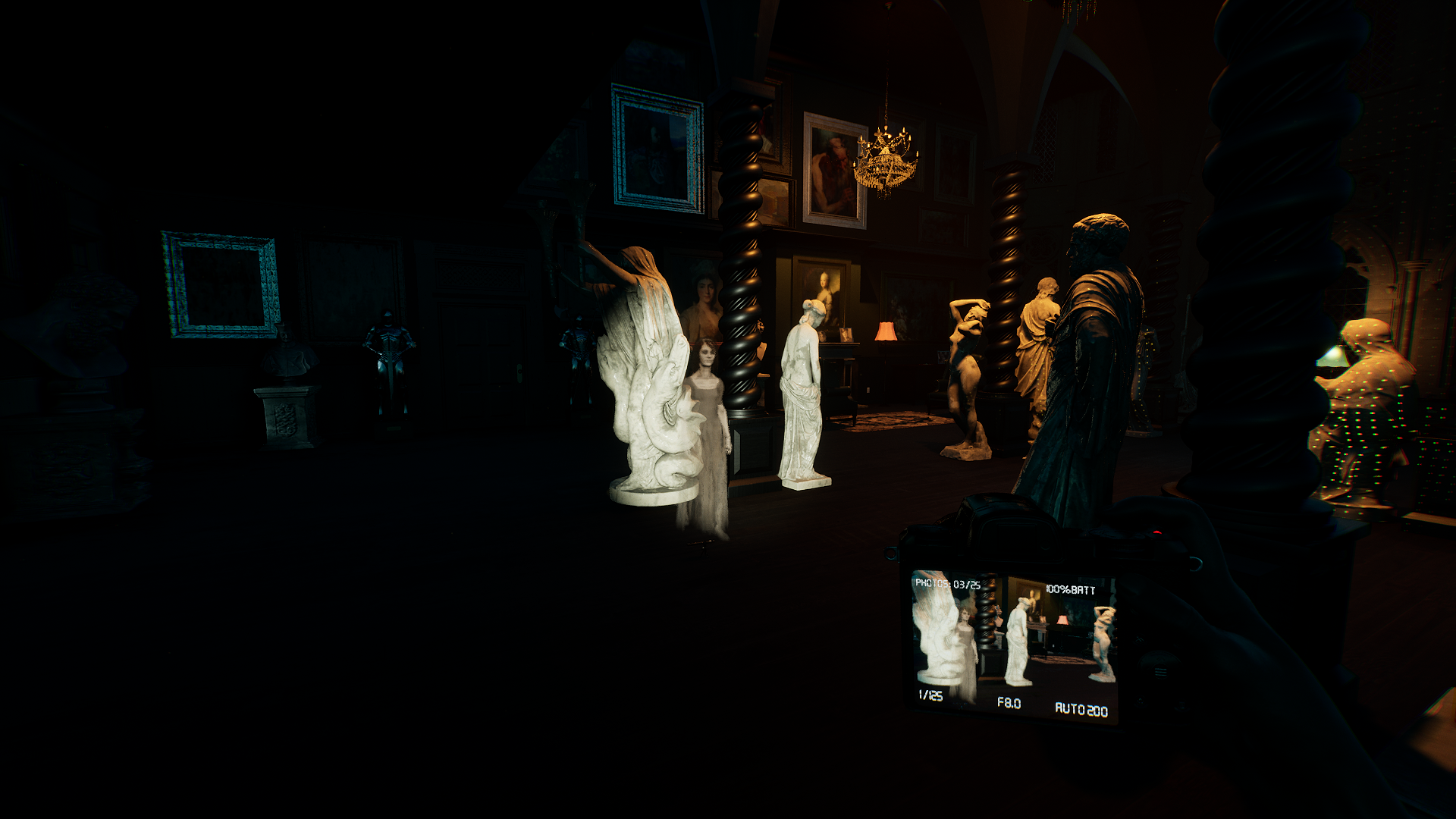
The voice acting is also quite good. Stephanie sounds legitimately compassionate while talking to ghosts. She’ll give a sympathetic “rest in peace” or “I know this was special to you. I’ll leave it here for you,” when placing a ghost’s hobby item after releasing them. Stephanie will only really speak during certain moments, like while gathering evidence or calming herself down when her nerves have dropped to a critical level. There are only a few times we get to hear her speak for a prolonged period. During the tutorial investigation, she’ll get a call from Conrad himself, where he explains a few gameplay mechanics. The chat between Conrad and Stephanie is adorable. It’s clear the two have a wholesome mentor and apprentice relationship. If anything, I wish there were more interactions, like her consulting him on the happenings of the mansion at the end of every chapter.
To put it bluntly, Among the Whispers has riveted this series to my soul. It’s not only a sizable improvement over the previous game in terms of pacing, but it has an excellent story and compelling core gameplay loop to boot. It brings a smile to my face knowing that Kip, the developer, is or will be passionately working on the next games in the series, and I can’t wait to see where he goes with the formula, setting, and characters from here.
Among The Whispers - Provocation
Excellent
Among the Whispers - Provocation takes the formula that Conrad Stevenson’s Paranormal PI introduced, streamlines the pacing, and adds a strong story with a killer setting. Any fan of single-player ghost-hunting games should consider this one a buy.
Pros
- Well executed slow-burn horror
- Excellent, compelling story
- Magnificent Drive is an outstanding setting
- Streamlined ghost-hunting mechanics
Cons
- I would have loved to explore the backyard!
- More character interactions would have been great
This review is based on a retail PC copy provided by the publisher.
